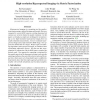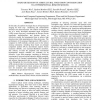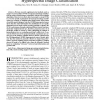ICASSP
2011
IEEE
13 years 5 months ago
2011
IEEE
Hyperspectral imaging analysis aims at the estimation of the number of constituent substances, known as endmembers, their spectral signatures as well as their abundance fractions ...
CVPR
2011
IEEE
13 years 8 months ago
2011
IEEE
Hyperspectral imaging is a promising tool for applications in geosensing, cultural heritage and beyond. However, compared to current RGB cameras, existing hyperspectral cameras ar...
IGARSS
2009
13 years 11 months ago
2009
In this study, the authors investigate the use of hyperspectral imaging for food crop monitoring and contamination detection and characterization. The authors investigate the use ...
IGARSS
2009
13 years 11 months ago
2009
Automated classification of land cover types based on hyperspectral imagery often involves a large geographical area, but class labels are available for only small portions of the...
ICIP
2010
IEEE
13 years 11 months ago
2010
IEEE
Hyperspectral imaging segmentation has been an active research area over the past few years. Despite the growing interest, some factors such as high spectrum variability are still...
JGS
2002
14 years 1 months ago
2002
Maximum likelihood supervised classifications with 1-m 128 band hyperspectral data accurately map in-stream habitats in the Lamar River, Wyoming with producer's accuracies of ...
TIP
2008
14 years 1 months ago
2008
Previous research applying kernel methods such as support vector machines (SVMs) to hyperspectral image classification has achieved performance competitive with the best available ...
ISCA
2007
IEEE
14 years 1 months ago
2007
IEEE
Hyperspectral sensors represent the most advanced instruments currently available for remote sensing of the Earth. The high spatial and spectral resolution of the images supplied ...
JPDC
2008
14 years 1 months ago
2008
Recent advances in space and computer technologies are revolutionizing the way remotely sensed data is collected, managed and interpreted. In particular, NASA is continuously gath...
ICPR
2010
IEEE
14 years 1 months ago
2010
IEEE
Hyperspectral imaging is a new technique in remote sensing that generates hundreds of images, corresponding to different wavelength channels, for the same area on the surface of t...



